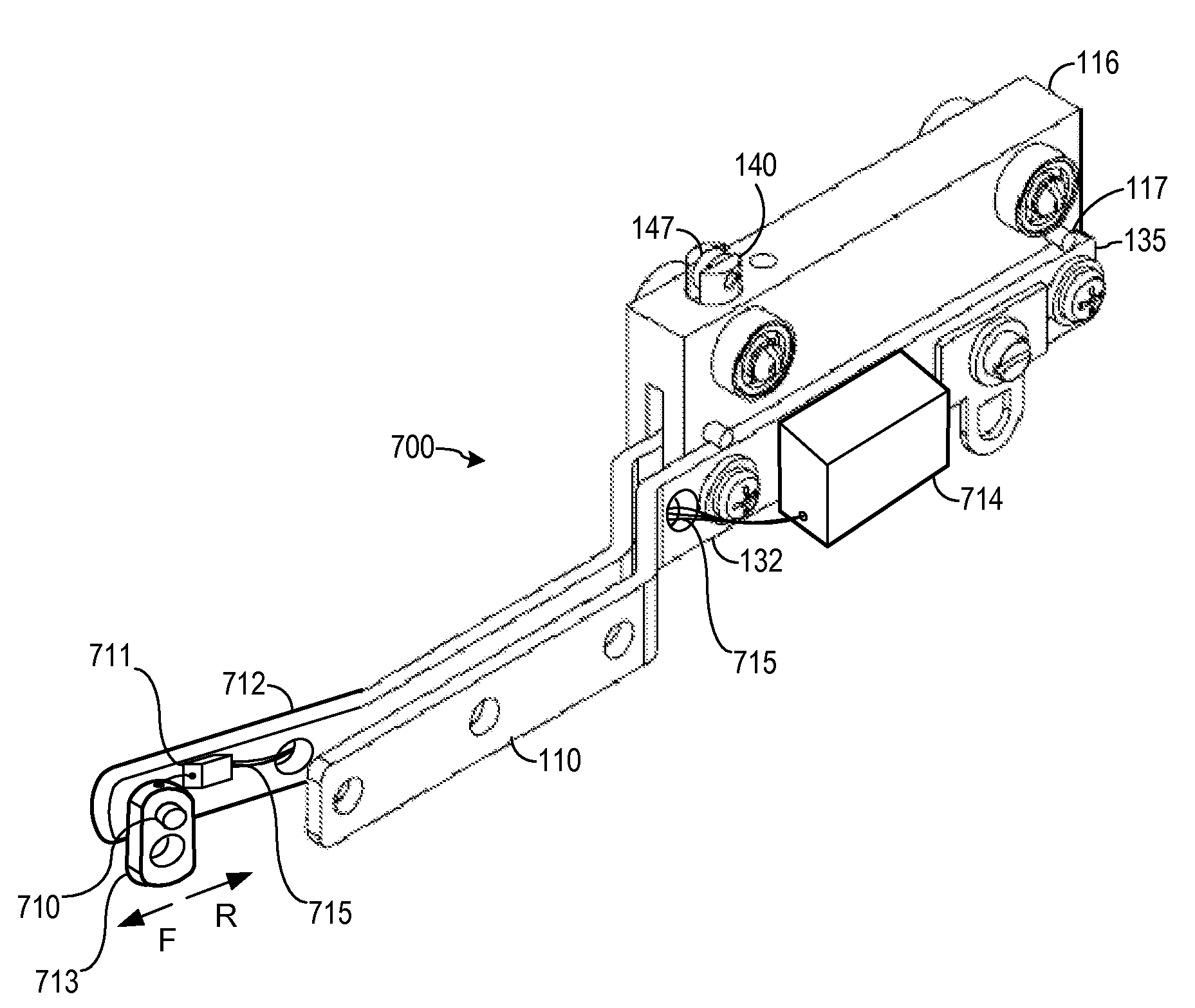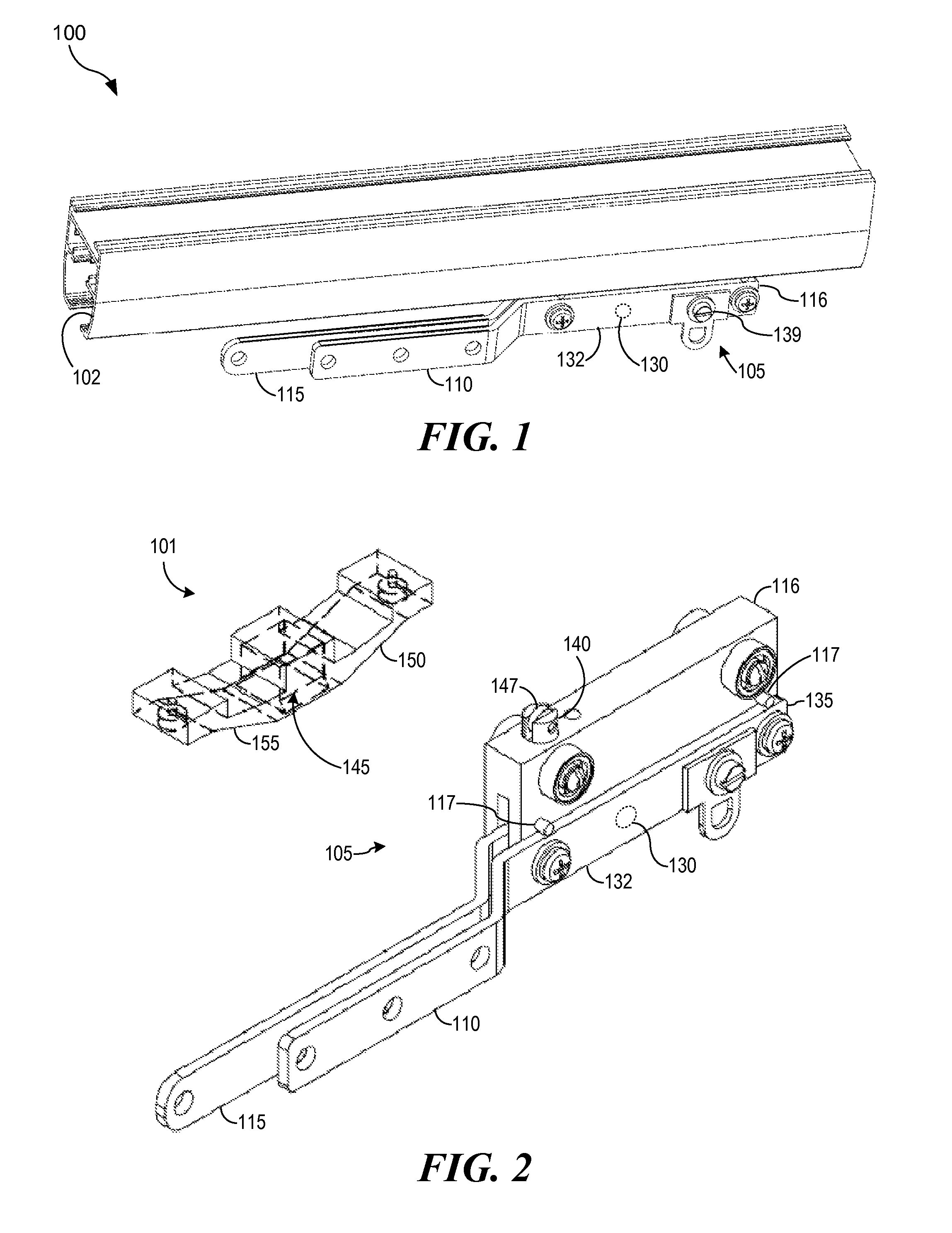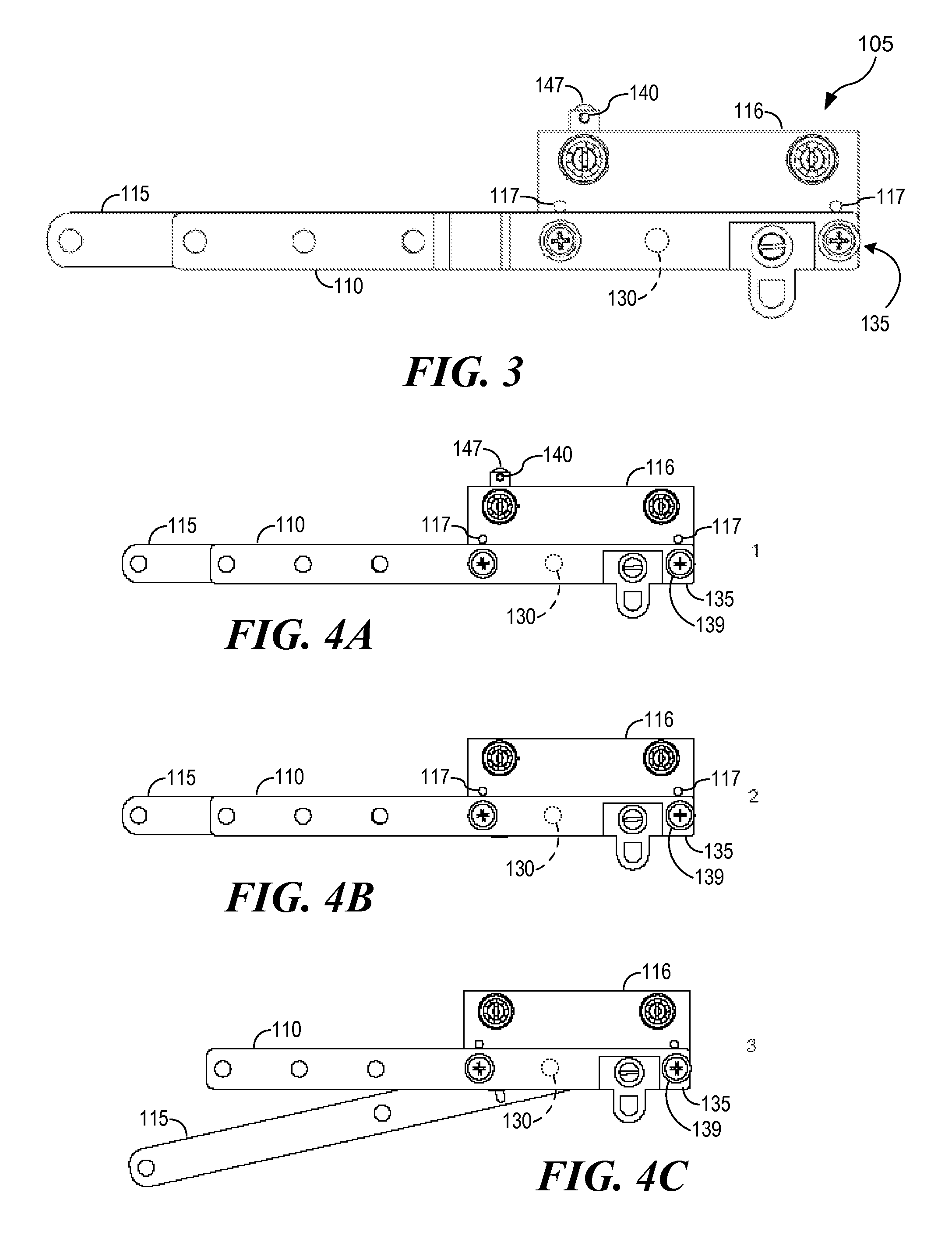Drapery motor remote activation by manual drapery pull
a drapery motor and remote activation technology, applied in the field of motorized drapery system activation, can solve the problems of fabric or system damage, cord drive motors are usually difficult to conceal, and require more maintenance for cord adjustment, so as to prevent damage to the electric drive system
- Summary
- Abstract
- Description
- Claims
- Application Information
AI Technical Summary
Benefits of technology
Problems solved by technology
Method used
Image
Examples
Embodiment Construction
[0042]Turning now to the drawings in detail, and initially to FIGS. 1, 2 and 3 thereof, one embodiment of a master carrier drive block assembly 100 with a mechanical disengager and no RF or IR transmitter. Master carrier block assembly 100, which can be slideably disposed inside headrail 102, is made up of two main components: the locking block section 101 that is connected to the drive belt (not shown) and the master carrier block section 105 that is attached to the forward end of the fabric of the drapes (not shown).
[0043]Turning now to FIGS. 4A-4C and 5A-5D, an elevation view of the master carrier block wherein the spring function required to carry the drapery load is separated from the spring function of the locking mechanism that disengageably connects the master carrier block 105 to the locking block section 101 connected to the drive belt (not shown). In the embodiment depicted, the invention further uses dual metal arms 110 and 115 mounted to master carrier block body 116. O...
PUM
 Login to View More
Login to View More Abstract
Description
Claims
Application Information
 Login to View More
Login to View More - R&D
- Intellectual Property
- Life Sciences
- Materials
- Tech Scout
- Unparalleled Data Quality
- Higher Quality Content
- 60% Fewer Hallucinations
Browse by: Latest US Patents, China's latest patents, Technical Efficacy Thesaurus, Application Domain, Technology Topic, Popular Technical Reports.
© 2025 PatSnap. All rights reserved.Legal|Privacy policy|Modern Slavery Act Transparency Statement|Sitemap|About US| Contact US: help@patsnap.com



